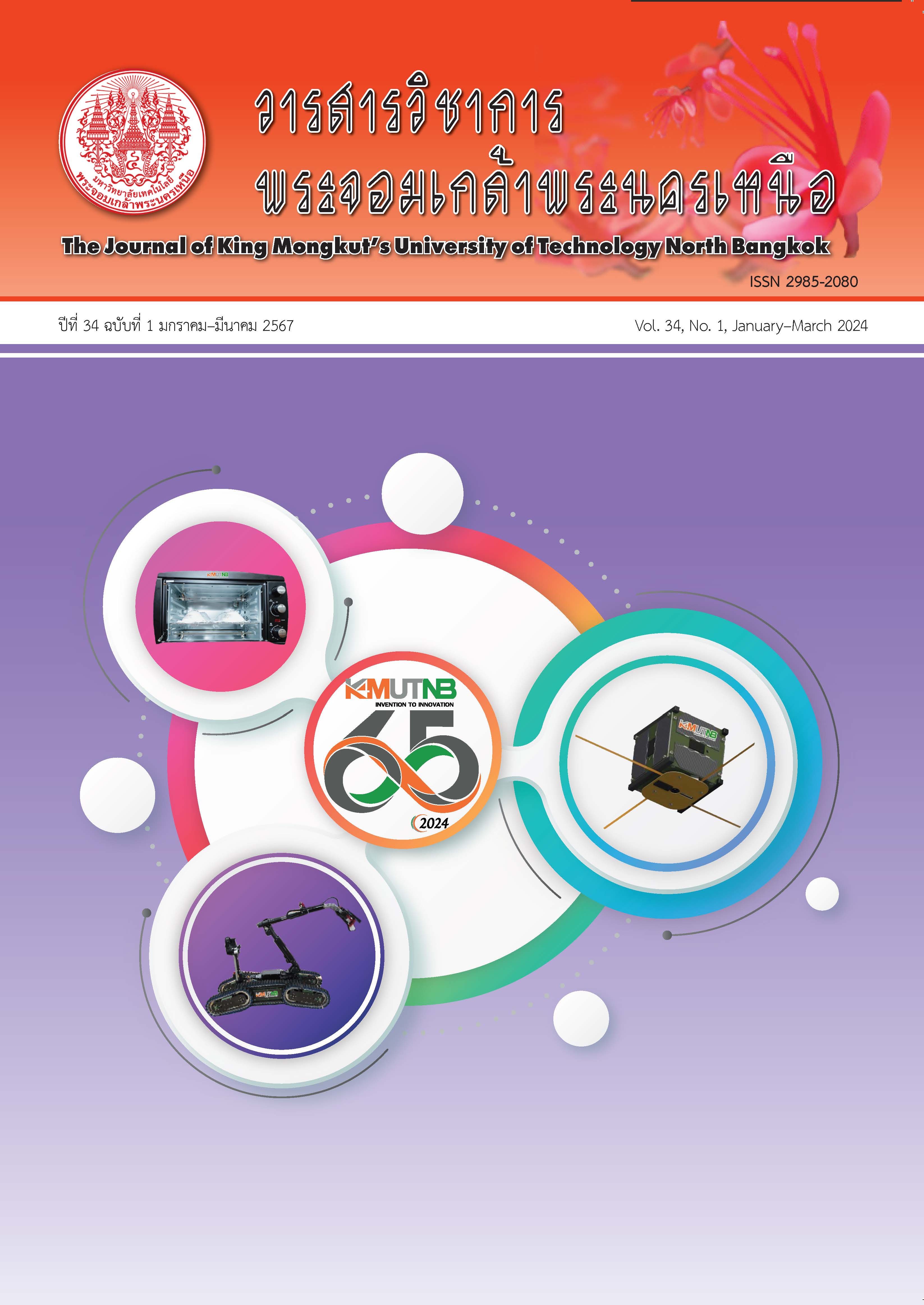The Recovery of Linear Alkylbenzene Sulfonic Acid from the Waste Sulfonation Process
Main Article Content
Abstract
Demand for detergent has been growing rapidly due to the impact of the COVID-19 pandemic on personal healthcare. The surfactant, particularly Linear Alkylbenzene Sulfonic acid (LAS), is the key component of detergent and is mainly synthesized via the sulfonation process between Linear Alkylbenzene (LAB) and Sulfur Trioxide (SO3). Even though the parameters involving the sulfonation process are carefully controlled, the waste of the sulfonation process still occurs. The waste is rich in LAS (78%–88%); Recovery of rich LAS waste by directly being used in detergent production can cause brownish color and acidic in fresh detergent leading to the devalued product. Therefore, the LAS recovered from the waste cannot be supplied for detergent production. This research aims to bleach the LAS contained in the sulfonation waste by hydrogen peroxide. The parameter that caused the dark brown color of LAS was identified. Moreover, the stability of LAS after bleaching with hydrogen peroxide was also examined. The result showed that the bleaching of 30 g of sulfonation waste with 3.84 wt% of hydrogen peroxide exhibited the decreasing of the value of the Klett color scale from 874 to 35 which approaches the standard quality of LAS for detergent production. These phenomena are caused by the decomposition of sulfone and olefins contained in the waste by hydrogen peroxide. Moreover, the stability of bleached LAS color was expected to prolong at least 7 days. Moreover, the percent of sulfuric acid (%H2SO4) and the Acid Value (AV) were diminished to 10.3% and 263 mg KOH/g sample which was 3.5 and 0.4 times higher than the standard quality of LAS, respectively. However, the addition of hydrogen peroxide could not destroy LAS due to the unchanged in the percent of active ingredients (%AI). This waste improvement process could reduce the cost of waste destruction in the incinerator which leads to the decline in the emission of CO2 and SOx from the destruction to the atmosphere. Furthermore, LAS recovered from the waste could be driving the Circular economy.
Article Details

This work is licensed under a Creative Commons Attribution-NonCommercial-NoDerivatives 4.0 International License.
The articles published are the opinion of the author only. The author is responsible for any legal consequences. That may arise from that article.
References
Expertmarketresearch. (2020). Asia Pacific Laundry Detergents Market. [Online] Available from: https://www.expertmarket research.com/reports/asia-pacific-laundrydetergents- market
D. W. Roberts, “Optimization of the linear alkyl benzene sulfonation process for surfactant manufacture,” Organic Process Research & Development, vol. 7, no. 2, pp. 172–184, 2003.
S. Baochang, L. Zhang, Z. Weng, L. Zhang, G. Chu, H. Zou, and J. Chen, “Sulfonation of alkylbenzene using liquid sulfonating agent in rotating packed bed: Experimental and numerical study,” Chemical Engineering and Processing: Process Intensification, vol. 119, pp. 93–100, 2017.
L. K. Wu, K. Y. Chen, S. Y. Cheng, B. S. Lee, and C. M. Shu, “Thermal decomposition of hydrogen peroxide in the presence of sulfuric acid,” Journal of Thermal Analysis and Calorimetry, vol. 93, no. 1, pp. 115–120, 2008.
Handbook of Detergents Part F: Production, 1 st ed., CRC Press Taylor & Francis Group., Madison Avenue, NY, 2009, pp. 44–89.
J. Ortega and T. Alfonso, “Sulfonation/sulfation processing technology for anionic surfactant manufacture,” Advances in Chemical Engineering, vol. 11, pp. 269–294, 2012.
P. S. Tully, “Improved process for preparing linear alkylbenzene sulfonates,” U.S. Patent 9616648, Apr. 24, 1997.
M. M. A. Unis, “Peroxide reactions of environmental relevance in aqueous solution,” the University of Northumbria at Newcastle (United Kingdom), 2010.
A. T. Rizaluddin, Q. Liu, P. R. Panggabean, H. Ohi, and K. Nakamata, “Application of peroxymonosulfuric acid as a modification of the totally chlorine-free bleaching of acacia wood prehydrolysis-kraft pulp,” Journal of Wood Science, vol. 61, pp. 292–298, 2015.
S. Anothairungrat and K. Piyamongkala, “Risk assessment of thermal hazard and reactivity of hydrogen peroxide by differential scanning calorimetry,” The Journal of KMUTNB, vol. 29, no. 2, pp. 292–301, 2019 (in Thai).
LabChem. (2017, December). Hydrogen Peroxide, 30% w/w, Safety Data Sheet. [Online]. 77(58) Available: http://www.labchem.com/ tools/msds/msds/LC15430.pdf
A. Moreno, C. Bengoechea, J. Bravo, and J. L. Berna, “A contribution to understanding secondary reactions in linear alkylbenzene sulfonation,” Journal of Surfactants and Detergents, vol. 6, pp. 137–142, 2003.
Tufailgroup. (2020). Products: LINEAR ALKYL BENZENE SULPHONIC ACID SOFT 96%. [Online]. Available: https://tufailgroup.com/product/ linear-alkyl-benzene-sulphonic-acid-soft- 96-percent/
D. Kloetzer, K. Linde, K. H. and Ojust, “Preparation of color-stable, light-colored, aqueous salt pastes of wash-active, α sulfofatty acid ester,” U.S. Patent 4547318, Oct. 15, 1985.
R. F. Langler, Z. A. Marini, and J. A. Pincock, “The photochemistry of benzylic sulfonyl compounds: The preparation of sulfones and sulfinic acids,” Canadian Journal of Chemistry, vol. 56, no. 7, pp. 903–907, 1978.
E. Ivanchina, E. Ivashkina, I. Dolganova, E. Frantsina, and I. Dolganov, “Influence of alkylaromatic hydrocarbons on the efficiency of linear alkylbenzene sulfonic acid synthesis,” Chemical Engineering Journal, vol. 329, pp. 250–261, 2017.

